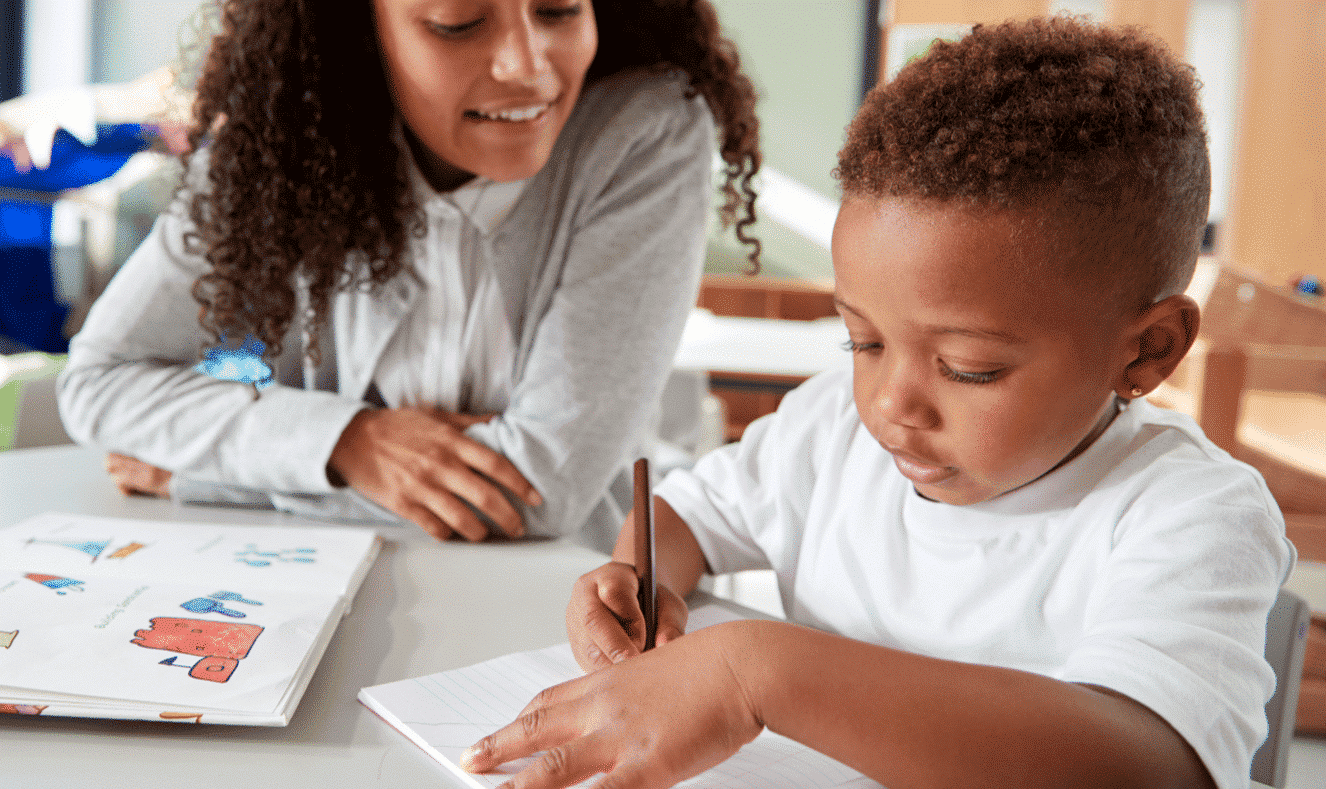The importance of nurturing imagination in preschoolers
In the formative years of a child’s life, imagination plays a pivotal role in shaping their cognitive and emotional development. Preschoolers possess an innate curiosity and an unbound capacity for creative thinking, making it crucial to nurture and cultivate their imaginative abilities. By fostering imagination, we empower young minds to explore new realms, problem-solve, and develop essential life skills such as critical thinking, empathy, and self-expression.
Imagination is the cornerstone of a child’s learning journey, enabling them to make sense of the world around them and construct their understanding of abstract concepts. Through imaginative play and storytelling, preschoolers can transcend the limitations of their immediate surroundings and embark on fantastical adventures, enhancing their ability to think creatively and develop a love for learning.
Furthermore, nurturing imagination in preschoolers promotes emotional intelligence and social skills. By engaging in imaginative scenarios, children learn to recognize and express emotions, develop empathy, and navigate interpersonal relationships. These skills are invaluable in fostering healthy social interactions and building a strong foundation for future academic and personal success.
READ ALSO :
What are storytelling activities?
Storytelling activities are engaging and interactive experiences that encourage preschoolers to tap into their innate creativity and imagination. These activities encompass a wide range of approaches, from traditional storytelling to interactive games, art projects, and multisensory experiences. By immersing children in the world of storytelling, we provide them with a safe and nurturing environment to explore their thoughts, emotions, and ideas.
Storytelling activities are not merely about reciting tales; they are powerful tools that stimulate a child’s imagination, promoting critical thinking, language development, and social-emotional growth. Through these activities, preschoolers learn to construct narratives, create vivid mental images, and engage in imaginative play, all while developing essential life skills.
Moreover, storytelling activities foster a love for literature and instill a lifelong appreciation for the power of storytelling. By exposing children to diverse stories and cultures, we broaden their perspectives and encourage them to embrace diversity and empathy towards others.
Benefits of storytelling activities for preschoolers
Engaging in storytelling activities offers numerous benefits for preschoolers, contributing to their overall development and laying a strong foundation for future learning and growth. Here are some of the key advantages:
- Cognitive Development: Storytelling activities stimulate a child’s imagination, encouraging them to think creatively, problem-solve, and develop critical thinking skills. By engaging in imaginative scenarios, preschoolers learn to make connections, draw inferences, and expand their understanding of the world around them.
- Language and Literacy Skills: Storytelling activities expose children to a rich vocabulary, improving their language comprehension and expression. As they listen to stories and participate in storytelling activities, preschoolers develop essential literacy skills such as listening, speaking, and storytelling abilities.
- Social and Emotional Development: Through storytelling, children learn to recognize and express emotions, develop empathy, and navigate social situations. They gain insights into different perspectives and cultures, fostering inclusivity and respect for diversity.
- Creativity and Self-Expression: Storytelling activities provide a safe space for preschoolers to explore their creativity and express themselves freely. By engaging in imaginative play and storytelling, children develop confidence, self-awareness, and a sense of identity.
- Attention and Focus: The interactive nature of storytelling activities captivates preschoolers’ attention and helps them develop their ability to focus and concentrate for extended periods. This skill is invaluable for future academic success and personal growth.
By incorporating storytelling activities into a preschooler’s routine, we equip them with the tools to thrive intellectually, emotionally, and socially, setting the stage for a lifetime of learning and personal growth.
Types of storytelling activities to inspire imagination
Storytelling activities come in various forms, each designed to engage preschoolers in unique and captivating ways. From interactive games to art projects and multisensory experiences, these activities provide a rich tapestry of opportunities to ignite a child’s imagination. Let’s explore some of the most engaging and effective types of storytelling activities:
Interactive storytelling games for preschoolers
Interactive storytelling games are a fantastic way to involve preschoolers in the storytelling process, fostering their imagination and encouraging active participation. These games often involve elements of role-play, problem-solving, and collaborative storytelling, making them both educational and entertaining. Here are some examples:
- Story Cubes: Using dice or cubes with different images or symbols, children take turns rolling and creating a story based on the images they see. This activity encourages creative thinking and storytelling skills.
- Storytelling Charades: Children act out characters, actions, or scenarios from a familiar story, and their peers must guess the story being portrayed. This activity promotes imagination, body language, and communication skills.
- Story Starters: Provide children with an intriguing opening line or scenario, and have them take turns building upon the story. This collaborative storytelling exercise fosters creativity, listening skills, and teamwork.
Storytelling through art and crafts
Combining storytelling with art and crafts activities allows preschoolers to express their imagination visually while developing fine motor skills and artistic expression. These hands-on activities not only engage children’s creativity but also provide a tangible representation of their stories. Examples include:
- Story Illustrations: After reading or telling a story, encourage children to create their own illustrations or dioramas depicting their favorite scenes or characters. This activity reinforces comprehension and promotes artistic expression.
- Storytelling Collages: Provide a variety of materials, such as magazines, fabrics, and natural elements, and have children create collages that represent their unique stories. This activity stimulates creativity and encourages the use of diverse materials.
- Storybook Making: Guide children in creating their own storybooks by folding and decorating pages, and then have them write or illustrate their original stories. This activity fosters literacy skills, creativity, and a sense of accomplishment.
Storytelling with puppets and props
Puppets and props are powerful tools for engaging preschoolers in storytelling activities. These tangible objects bring stories to life, captivating children’s imaginations and providing a hands-on approach to storytelling. Examples include:
- Puppet Shows: Children can create their own puppets using various materials, such as socks, paper bags, or popsicle sticks, and then perform puppet shows based on their favorite stories or original narratives. This activity encourages creativity, public speaking, and storytelling skills.
- Story Boxes or Bags: Fill a box or bag with various props and objects related to a specific story. Children can explore the contents and use the props to retell or create their own versions of the story. This activity promotes sensory exploration, comprehension, and imagination.
- Storytelling with Natural Materials: Gather natural materials like sticks, leaves, and rocks, and encourage children to use them as props or characters in their storytelling adventures. This activity fosters a connection with nature and promotes imaginative play.
Incorporating music and movement into storytelling
Combining storytelling with music and movement not only captivates preschoolers’ attention but also enhances their overall learning experience. These multisensory activities engage multiple senses, promoting creativity, physical development, and a deeper understanding of the story. Examples include:
- Story Songs: Create or adapt songs that tell a story or reinforce the themes and characters from a particular tale. Children can sing, dance, and act out the story through movement and music.
- Storytelling with Instruments: Provide children with simple instruments, such as drums, shakers, or bells, and encourage them to create sound effects or rhythms to accompany their storytelling. This activity fosters auditory skills, creativity, and an appreciation for music.
- Dramatic Storytelling: Guide children in acting out stories through dramatic play, incorporating movement, facial expressions, and gestures. This activity promotes physical expression, emotional intelligence, and a deeper connection with the characters and plot.
Storytelling activities for group settings
While storytelling activities can be enjoyed individually, they also lend themselves beautifully to group settings, fostering collaboration, social skills, and a shared love for storytelling. In a group environment, preschoolers can learn from one another, build upon each other’s ideas, and create collective narratives that reflect diverse perspectives. Here are some engaging storytelling activities for group settings:
- Circle Stories: Children sit in a circle, and each child contributes a line or a few sentences to create a collaborative story. This activity encourages active listening, turn-taking, and creative thinking.
- Story Retelling: After reading or telling a story, divide the children into small groups and have them retell the story using their own words and interpretations. This activity promotes comprehension, memory skills, and collaborative storytelling.
- Story Charades: One child acts out a character, scene, or action from a familiar story, and the rest of the group must guess the story being portrayed. This activity fosters imagination, nonverbal communication, and teamwork.
- Story Walks: Take the children on a nature walk or explore the classroom, and encourage them to observe and gather inspiration for creating their own stories based on their surroundings. This activity promotes observation skills, creativity, and an appreciation for the natural world.
- Storytelling Stations: Set up various stations with different storytelling activities, such as puppet-making, story cubes, or story starters. Children can rotate through the stations, engaging in diverse storytelling experiences and collaborating with their peers.
Group storytelling activities not only nurture imagination and creativity but also foster essential social skills, such as communication, teamwork, and respect for diverse perspectives. By creating a supportive and inclusive environment, preschoolers can explore the boundless realms of storytelling together.
Storytelling resources and materials for preschoolers
To create an engaging and enriching storytelling experience for preschoolers, it’s essential to have a diverse collection of resources and materials at your disposal. These tools not only provide inspiration and guidance but also encourage creativity and hands-on learning. Here are some valuable storytelling resources and materials to consider:
- Storybooks: Build a diverse library of storybooks that represent various cultures, genres, and themes. Classic tales, modern picture books, and folktales from around the world can spark imagination and introduce children to new narratives.
- Storytelling Prompts and Idea Cards: Invest in a set of storytelling prompts or idea cards that provide starting points for creating original stories. These prompts can include character descriptions, settings, or plot twists to ignite creativity.
- Puppets and Props: Gather a variety of puppets, such as hand puppets, finger puppets, or stick puppets, as well as props like stuffed animals, dolls, or household items. These tangible objects can bring stories to life and encourage interactive storytelling.
- Art Supplies: Stock up on a range of art supplies, including crayons, markers, paints, scissors, glue, and various craft materials. These supplies allow children to visually express their stories through illustrations, collages, or storybook creations.
- Multimedia Resources: Incorporate multimedia resources, such as audiobooks, storytelling apps, or educational videos, to expose children to diverse storytelling styles and techniques. These resources can also serve as inspiration for their own storytelling adventures.
- Nature Walk Kits: Prepare nature walk kits with magnifying glasses, observation journals, and containers for collecting natural materials like leaves, rocks, or pinecones. These materials can inspire children to create stories based on their outdoor explorations.
- Storytelling Tents or Cozy Spaces: Create a dedicated storytelling space, such as a cozy tent or a designated reading nook, where children can immerse themselves in the world of stories and let their imaginations soar.
By curating a diverse collection of storytelling resources and materials, you not only provide preschoolers with the tools to explore their creativity but also foster a lifelong love for storytelling and a deeper appreciation for the power of imagination.
Unlock the boundless potential of your child’s imagination with our engaging storytelling activities and resources. Visit our website to explore our carefully curated collection of storybooks, puppets, art supplies, and multimedia resources designed to ignite creativity and foster a love for storytelling. Join our community of inspired parents and educators, and embark on a journey of endless imagination with your little ones. Visit [website link] today!
RELATED ARTICLE :
- Unleash Your Child’s Creativity: Mastering Shapes and Colors with Color by Number Worksheets
- Unleashing Young Minds: Worksheets to Improve Critical Thinking Skills for Kids
Conclusion
Nurturing imagination and creativity in preschoolers is not just a delightful endeavor; it is an essential investment in their cognitive, emotional, and social development. Storytelling activities provide a captivating and immersive platform for children to explore their boundless imaginations, fostering critical thinking, language skills, empathy, and self-expression.
By engaging in interactive storytelling games, crafting narratives through art and puppetry, and incorporating music and movement, we create a rich tapestry of experiences that stimulate preschoolers’ minds and ignite their passion for storytelling. These activities not only entertain but also lay a strong foundation for future academic success, personal growth, and a lifelong love for learning.
In a world where technology and structured curricula often dominate, storytelling activities offer a refreshing escape into the realms of imagination, where children can freely express their thoughts, emotions, and creativity. By embracing the power of storytelling, we empower preschoolers to become confident, empathetic, and creative individuals, equipped with the skills to navigate the complexities of life with resilience and wonder.
So, let us embrace the magic of storytelling, for it is through these enchanting tales that we unlock the boundless potential of our children’s imaginations, nurturing their curiosity, and inspiring them to dream, create, and explore the infinite possibilities that lie ahead.






